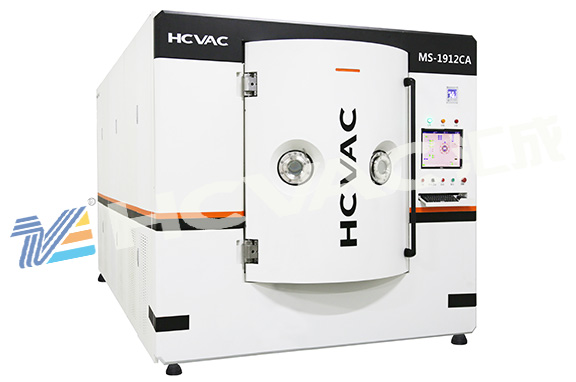The pvd coating machine is currently the most widely used equipment for making vacuum conditions. At present, the items used in life are inseparable from the coating industry. With the improvement of living standards, there are naturally higher requirements for the coating produced by the coating machine. Know what structures the pvd coating machine is composed of. What are its related components and components? The following will introduce you in detail

The first part is the vacuum main body-vacuum chamber: according to the different requirements of the processed products, the size of the vacuum chamber is also different. At present, the most used diameters are 1.3M, 0.9M, 1.5M, 1.8M, etc. Production requires no rust, solidity, etc., and each part of the vacuum chamber has a connection valve to connect each air pump.
The second part is the auxiliary exhaust system: this exhaust system adopts "diffusion pump + mechanical pump + roots pump + cryogenic cold trap + polycold" to form the exhaust process: the mechanical pump first pumps the vacuum chamber to less than 2.0*10-2PA The low vacuum state on the left and right provides the premise for the subsequent vacuuming of the diffusion pump. Then, when the diffusion pump is pumping the vacuum chamber, the mechanical pump cooperates with the oil diffusion pump to form a series connection to complete the pumping action in this way. The exhaust system is an important part of the vacuum system of the coating machine, which is mainly composed of a mechanical pump, a booster pump (mainly introducing the Roots pump), and an oil diffusion pump.
Mechanical pump: also known as the backing pump, the mechanical pump is the most widely used low vacuum pump. It uses oil to maintain the sealing effect and relies on mechanical methods to continuously change the volume of the suction cavity in the pump to make the pumped container. The volume of the gas inside expands continuously to obtain a vacuum. There are many types of mechanical pumps, commonly used are spool valve type (this is mainly used in large equipment), piston reciprocating type, fixed vane type and rotary vane type (this is currently the most widely used, this article mainly introduces) four types.
Resistance vacuum gauge (also known as Pirani vacuum gauge): It is mainly composed of electric heating wire, shell and bracket, and mainly works according to the way that the thermal conductivity of gas is proportional to the pressure under low pressure. The upper opening is connected to the vacuum system to be measured, the heating wire is made of metal wire with a large resistance temperature coefficient, and the two support leads are connected to the measurement circuit. When the pressure decreases, the heat lost due to the heat conduction of the gas decreases, so when the heating current of the heating wire is stable, the temperature of the heating wire increases, and the resistance of the heating wire increases. The pressure has the following relationship: This is the working principle of the resistance vacuum gauge. The measuring range of this vacuum gauge is between 100-10-1 Pa, and the currently used model is WP-02.
Magnetron discharge vacuum gauge:
Working principle: At the beginning of the discharge, when the free electrons in the space move to the anode, under the action of the orthogonal electromagnetic field, the trajectory of the electrons is not a straight line but a spiral line, and because the anode is frame-shaped, the electrons do not necessarily move the first time. It encounters the anode, but passes through the anode, is repelled by the opposite cathode, and returns again. This is repeated many times before the anode can be marked. Since the electron path is greatly lengthened, the number of molecules colliding and ionized increases, so that the discharge (also known as Penning discharge) is maintained at lower pressures (below 10-4 Pa).
The third part is the evaporation system: The evaporation system mainly refers to the part of the film forming device. There are many film forming devices in the coating machine, including resistance heating, electron gun evaporation, magnetron sputtering, radio frequency sputtering, ion plating and other methods. Two methods of heating and electron gun evaporation are introduced, because I use these two methods more.
The fourth part is the film forming control system: There are many application methods for film monitoring, mainly: visual monitoring method, fixed (extreme) value monitoring, crystal oscillation monitoring, time monitoring and so on. I mainly introduce three kinds of visual monitoring, fixed (extreme) monitoring and crystal oscillation monitoring.
Visual monitoring is also called direct monitoring, which is to use eye monitoring, because in the process of film growth, due to the interference phenomenon, there will be color changes. We control the thickness of the film according to the color changes. This method has certain errors, so it is not It is very accurate, it needs to rely on experience.
The above is the approximate structure of the pvd coating machine. I hope it can help you, and I hope that through this general introduction, you will have a general understanding of the
pvd coating machine.



